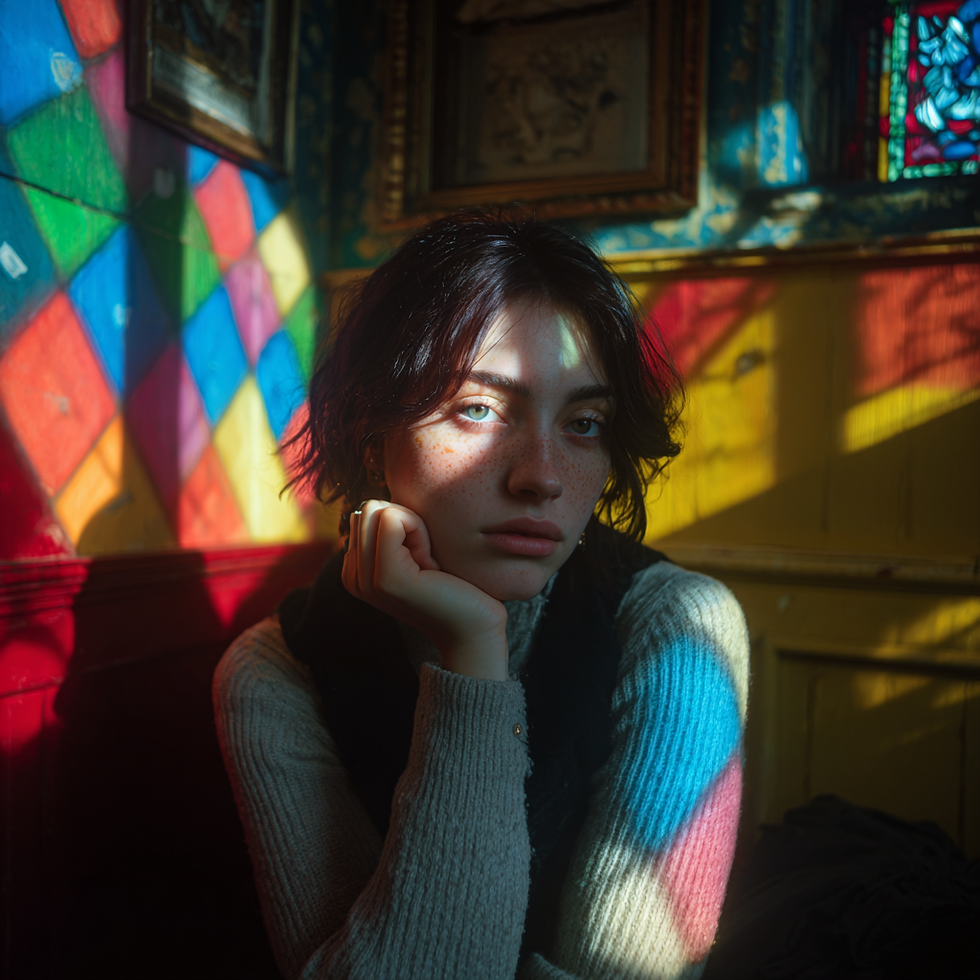The Psychology of Color: How Hues Shape Your Mood, Focus, and Behavior
- Sophia Whitehouse

- Jul 23, 2025
- 3 min read
Blue calms. Red energizes. Yellow inspires.
Or does it? Turns out, the psychology of color isn’t just for artists or marketers—it’s your brain’s quiet interpreter of the world around you.
Color impacts emotion, cognition, and behavior. And if you know how it works, you can harness it for everything from focus to relaxation.

🎨 The Brain on Color
When your eyes see color, your brain doesn’t just categorize it—it interprets it emotionally. Light waves hit your retina, and the signals travel to your hypothalamus, triggering hormonal and neurological reactions.
Yep. Color can literally change your chemistry.
🚦 What Different Colors Tend to Do
These are generalizations, not rules—but science shows consistent patterns in how most people respond:
🔵 Blue
Associated with calm, trust, stability
Lowers blood pressure and heart rate
Enhances focus and productivity (hello, blue-tinted Zoom backgrounds)
🔴 Red
Increases energy, attention, and appetite
Can trigger stress or aggression in high doses
Boosts performance on detail-oriented tasks
🟢 Green
Linked to balance, restoration, and nature
Reduces anxiety
Enhances creative thinking
🟡 Yellow
Associated with happiness and optimism
Too much can cause visual fatigue or irritability
Often used to stimulate learning and memory
⚫️ Black / ⚪️ White / ⚪️ Gray
Black: authority, sophistication, or sadness
White: clarity, cleanliness, or emptiness
Gray: neutrality—or sometimes indecision or low energy
🧠 Color in Context
Culture matters.
White is worn at weddings in the U.S. but at funerals in some Eastern traditions.
Personal associations matter.
Your favorite hoodie in high school? That color now carries emotional weight.
Saturation and brightness matter.
A soft blue isn’t the same as neon blue. Pastels soothe. Neons stimulate.
🎯 How to Use Color to Support Mental Health
1. At Work: Boost Focus
Use blues and greens in your office or workspace to stay grounded and attentive.
2. At Home: Create Calm Zones
Soft greens, light blues, or earth tones help regulate nervous system responses. Great for bedrooms and therapy spaces.
3. In Your Wardrobe: Signal Intention
Bold red for energy and assertiveness. Muted colors when you want to feel grounded. Yellow when you need a confidence boost.
4. In Therapy: Explore Emotional Associations
Use color when journaling or in art therapy to express emotions that are hard to verbalize.
5. On Screens: Filter the Noise
Switch your phone to grayscale if you’re prone to overstimulation—or limit red-toned apps when feeling anxious.
🚫 What Color Psychology is Not
It’s not a rigid rulebook. It’s a flexible toolkit. Your brain’s response to color is influenced by your experiences, mood, environment, and yes—your trauma history.
The Takeaway
Color speaks to your nervous system even when you’re not listening. Learning how to use it intentionally can reduce stress, enhance performance, and create spaces that feel like you.
Want help customizing your environment—or mindset—for better mental wellness? We’re here to help.
📞 Call or text: 614-470-4466
📧 Email: admin@achievepsychology.org
🌐 Visit: www.achievepsychology.org
References:
Elliot, A. J., & Maier, M. A. (2012). Color Psychology: Effects of Perceiving Color on Psychological Functioning.
American Psychological Association. (2023). The Impact of Color on Behavior.
Kwallek, N., Lewis, C. M., & Robbins, A. S. (1997). Effects of Office Interior Color on Workers’ Mood and Productivity.
Spence, C. (2020). On the Psychological Impact of Color.
Wexner, L. B. (1954). The Degree to Which Colors (Hues) Are Associated with Mood-Tones.




Comments